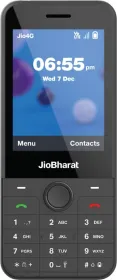TL; DR
- With Bharat NCAP 2.0, a vehicle’s star rating will no longer be simply about crash-worthiness but will also incorporate prevention, protection of vulnerable road users, and post-crash considerations.
- The draft mandates tests for leg protection, head impact mitigation for pedestrians (adult and child), and optional tests for Autonomous Emergency Braking (AEB) responses to pedestrians and motorcyclists.
- India has long faced road-safety issues, and establishing a homegrown NCAP regime in 2023 was a step forward in transparency regarding vehicle safety. The updated draft now signals a serious attempt to align with global best practices in new car safety.
The Ministry of Road Transport and Highways (MoRTH) has released a new draft proposing a major overhaul of the Bharat NCAP programme. It is slated for implementation in October 2027. Meanwhile, the current protocol will expire on September 30, 2027.
Under the current Bharat NCAP framework, vehicles are tested and rated primarily on three verticals: Adult Occupant Protection (AOP), Child Occupant Protection (COP), and Safety Assist Technologies (SAT). However, the Bharat NCAP 2.0 will significantly broaden the scope of assessment, mandating additional crash tests, higher safety requirements, and new rating criteria.
Also Read: Toyota Experiential Museum Opens In Bengaluru And It’s Not All About Cars: Details Below
New Bharat NCAP 2.0 parameters (proposed)
With Bharat NCAP 2.0, a vehicle’s star rating will no longer be simply about crash-worthiness but will also incorporate prevention, protection of vulnerable road users, and post-crash considerations.
The five proposed assessment pillars are given below.
- Crash Protection (55% of the total score)
- Vulnerable Road User (VRU) Protection (20% of the total score)
- Safe Driving Technologies (10% of the score)
- Accident Avoidance System (10% of the score)
- post-crash safety (5% of the total score).
This weighting means that while crash impact performance remains a significant portion of the assessment, there is now significant emphasis on other areas. As MoRTH’s draft states, “while a safety rating can never fully capture the complexity of the real world, the vehicle improvements brought by high safety standards have the potential to benefit consumers and society as a whole.”
Also Read: Kia Seltos 2nd Generation Spotted Again: Everything We Know About The 2026 Upgrade
Expanded crash testing suite
The draft notification introduces five mandatory crash test types, replacing the existing few tests to reflect real-world scenarios better.
- 64 km/h offset frontal impact
- 50 km/h full-width frontal impact
- 50 km/h mobile deformable barrier side impact
- 32 km/h oblique pole side impact
- 50 km/h mobile rigid barrier rear impact
Moreover, advanced crash-test dummies will be used to assess injuries to adult and child occupants.
Mandatory technical fitments and minimum thresholds
Among the most notable inclusions is the “vulnerable road user” protection for pedestrians and two-wheelers. The draft mandates tests for leg protection, head impact mitigation for pedestrians (adult and child), and optional tests for Autonomous Emergency Braking (AEB) responses to pedestrians and motorcyclists.
Bharat NCAP 2.0: Context & Implications
India has long faced road-safety issues, and establishing a homegrown NCAP regime in 2023 was a step forward in transparency regarding vehicle safety. The updated draft now signals a serious attempt to align with global best practices in new car safety.
For OEMs, the tougher requirements mean higher costs, more rigorous engineering and testing, and earlier integration of advanced safety technologies, even in lower-priced segments. For consumers, the shift means star ratings will become more meaningful. A higher rating under the new Bharat NCAP 2.0 should give greater confidence.

You can follow Smartprix on Twitter, Facebook, Instagram, and Google News. Visit smartprix.com for the latest tech and auto news, reviews, and guides.


































